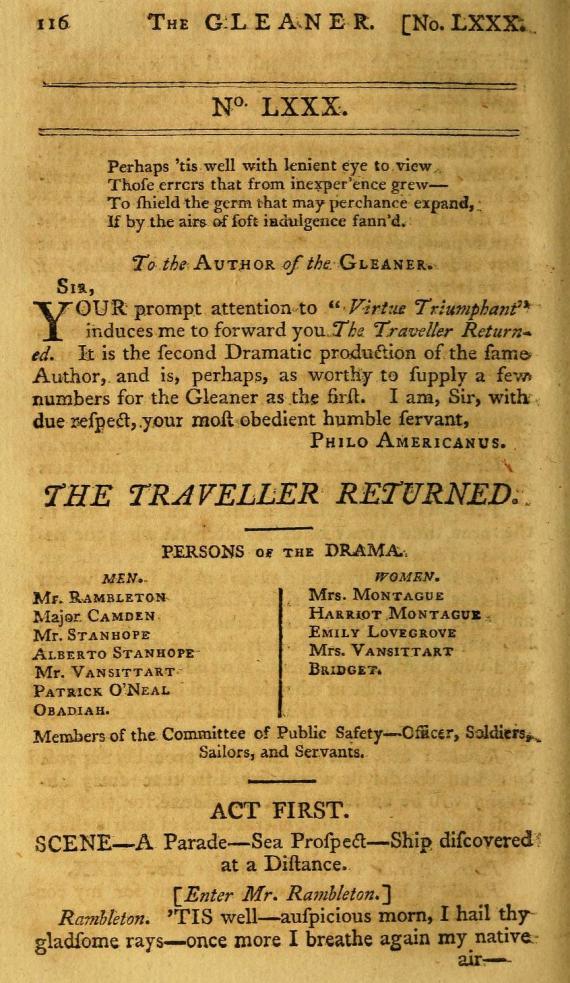JUDITH SARGENT MURRAY, The Traveler Returned, in The Gleaner, Volume 3, Newbury Street: Thomas and Andrews, February 1798
JUDITH SARGENT MURRAY, The Traveler Returned, in The Gleaner, Volume 3, Newbury Street: Thomas and Andrews, February 1798
First performed on March 9, 1796, The Traveler Returned, Murray’s second play, is a conventional comedy about mistaken identities and a family reunion. And yet Murray was probably the only woman writing at the time in the United States who could have produced it. Here’s why: The “traveler” referred to in the title is one Mr. Montague. Years before the play begins he deserted his family because his young wife was flirting (or worse!) with other men. When he reappears, pretending to be someone else, he finds that, though sorry, Mrs. Montague has endured. Unlike the doomed heroines of seduction fiction, she has neither died nor been consumed by guilt. Rather, she has become a scholar. Indeed, when we first see her in this scene, she is in her library studying chemistry. The Traveler Returned, then, moves boldly beyond widely shared assumptions about the intellectual inferiority of women. Interestingly, the part of Mrs. Montague was played by an actress recently arrived from London: Mrs. Elizabeth Arnold, whose daughter Eliza would go on to become the mother of Edgar Allan Poe!
Boston Public Library, Rare Books & Manuscripts

